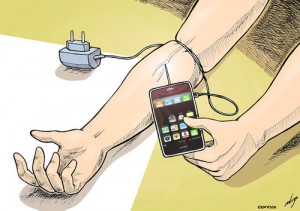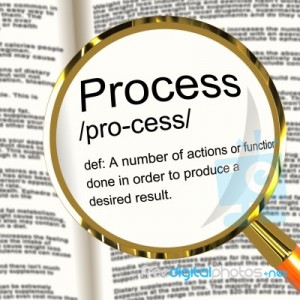By Fiona Deane
 “I don’t get it!”. “That´s stupid!” “That´s impossible!” These student utterances may resonate with you and perhaps hound or hinder you in the classroom. The age of screenagers, google and instant gratification can lead to impatience, exasperated sighs and a holding of the teacher as responsible for classroom success or failure. Many students are not yet aware that they themselves magically hold the key to better learning and understanding.
“I don’t get it!”. “That´s stupid!” “That´s impossible!” These student utterances may resonate with you and perhaps hound or hinder you in the classroom. The age of screenagers, google and instant gratification can lead to impatience, exasperated sighs and a holding of the teacher as responsible for classroom success or failure. Many students are not yet aware that they themselves magically hold the key to better learning and understanding.
As the first of a series of posts focusing on empowering our students, this post will:
- explain students´ lack of faith in themselves
- discuss theories to resolve this
- give an activity to start empowering our learners to trust and develop themselves
Passivity
Harmer (2001) tells us “passivity… is the enemy of true learning”. The role of instant media plays its part in this passivity. Many students come to the classroom with a developed reliance on others or a search engine to give them quick answers. Problem-solving, critical thinking, brainstorming, deep reading can therefore be met with a rolling of eyes or infuriation since demands are made on the brain beyond lower-order thinking such as “copy” and “paste”, or “play”.
students come to the classroom with a developed reliance on others or a search engine to give them quick answers. Problem-solving, critical thinking, brainstorming, deep reading can therefore be met with a rolling of eyes or infuriation since demands are made on the brain beyond lower-order thinking such as “copy” and “paste”, or “play”.
Scrivener (2012) argues that a certain type of passivity may be developed at home. Some teenagers may have experienced an education culture where obedience to authority is valued above thinking for yourself. In his book “Korea The Impossible Country”, Daniel Tudor writes that Confuciansim has created a culture where between “older and younger….the superior partner should act with a duty of responsibility and benevolence to the lower, who should respond in return with loyalty and obedience.” This older/younger relationship is easily transferred to the teacher/student relationship.
Lack of self-awareness
 Many learners come to the classroom “not… aware of their individual cognitive or perceptual learning styles” (Lightbown & Spada, 2006). Indeed, they may not even be aware that such concepts as learning styles or multiple intelligences exist. Answering questions such as: “Am I open-minded to different points of view?”, “Am I a visual or kinesthetic learner?”, “Do I like solving puzzles?”, “Does stress affect my performance?”, “Can I think on my feet?” are crucial to establishing and prioritizing individual learner needs.
Many learners come to the classroom “not… aware of their individual cognitive or perceptual learning styles” (Lightbown & Spada, 2006). Indeed, they may not even be aware that such concepts as learning styles or multiple intelligences exist. Answering questions such as: “Am I open-minded to different points of view?”, “Am I a visual or kinesthetic learner?”, “Do I like solving puzzles?”, “Does stress affect my performance?”, “Can I think on my feet?” are crucial to establishing and prioritizing individual learner needs.
Meta-cognition & Reflection
 According to Geoff Petty (1998), “reflection involves a systematic and objective evaluation of the student´s concrete experience”. Encouraging students to consider who they are as people and share this with their classmates is arguably the first piece of the learning puzzle. The cornerstone is their reflection on their innate strengths and weaknesses, which can then be followed up regularly with reflection on their progress on these points.
According to Geoff Petty (1998), “reflection involves a systematic and objective evaluation of the student´s concrete experience”. Encouraging students to consider who they are as people and share this with their classmates is arguably the first piece of the learning puzzle. The cornerstone is their reflection on their innate strengths and weaknesses, which can then be followed up regularly with reflection on their progress on these points.
Taking responsibility
Petty (1998) suggests that reflection “may be largely undertaken by… the teacher at first, but the long-term aim should be to get the students to carry out the process by themselves”. Scharle and Szabó (2000) believe that responsible learners are “learners who accept the idea that their own efforts are crucial to progress in learning, and behave accordingly”. They go on to say that learners “need to realize and accept that success in learning depends as much on the student as on the teacher”. By asking your students to question their learning habits and identity, you are effectively turning them into responsible learners without them realizing.
 The gateway to empowerment & self-belief
The gateway to empowerment & self-belief
Crucially, we as teachers need to disengage from our “leader” role and encourage our students to get to know themselves, look at themselves in the mirror and know their strengths and weaknesses. At this moment, the student may first experience positive feelings of empowerment and trust and begin to understand that they hold the key to their learning.
Class type: ELT Exam or General English groups at Intermediate to Advanced levels.
1) Learners are asked to discuss in pairs the question: “What skills and personal qualities do I need to be an effective language learner?”
2) After about ten to fifteen minutes of discussion, we share our ideas together on the board. It is always the students themselves (with little if any prompting from myself) who come up with such fantastic answers as these:
- imaginative
- open-minded
- finding fun in the learning process
- thinking outside the box
- believing in myself
- patient
- outgoing
- not afraid to get things wrong
- hard-working/diligent
- able to identify what I need to improve
- reading frequently in English”
3) The students are asked to reflect in pairs on which of these attributes they already possess and which they might perhaps need to work on.
4) This is then fedback to the class as a whole to ensure that learners understand that all students have strengths and weaknesses and that these will be different for each of them.
 5) Creators of their own advice: I take a picture of the ideas brainstormed on the whiteboard, print it out and put it on the pin-board in the classroom. Conveniently, as the course progresses these student created ideas can be referred to at times of struggle to encourage them on their journey. For example, if a student may resist trying out a new technique or activiity, I refer them back to the ideas that they came up with and ask them if open-minded was a good quality that was mentioned in order to be an effective learner.
5) Creators of their own advice: I take a picture of the ideas brainstormed on the whiteboard, print it out and put it on the pin-board in the classroom. Conveniently, as the course progresses these student created ideas can be referred to at times of struggle to encourage them on their journey. For example, if a student may resist trying out a new technique or activiity, I refer them back to the ideas that they came up with and ask them if open-minded was a good quality that was mentioned in order to be an effective learner.
I have found this an invaluable activity on all the Cambridge CAE exam classes that I have taught. It lays the foundations for further reflections that take place throughout the course. Try it out and let me know how it goes!
Fiona
References & Recommended Reading
Harmer J The Practice of English Language Teaching (2001) Pearson Education Ltd
Lightbown P. & Spada N How Languages are learned (2006) Oxford
Oxford R Language Learning Strategies: An Update (1994) http://www.cal.org/resources/digest/oxford01.html
Petty G Teaching Today A Practical Guide (1998) Nelson Thornes
Pulverness, A. Just how low can you go? IATEFL Learner Independence PL Newsletter (2000) IATEFL
Scharle A & Szabó A Learner Autonomy, A guide to developing learner responsibility (2000) Cambridge Handbooks for Language Teachers
Scrivener J Classroom Management Techniques (2012) Cambridge Handbooks for Language Teachers
Tudor D Korea The Impossible Country (2012) Tuttle Publishing






